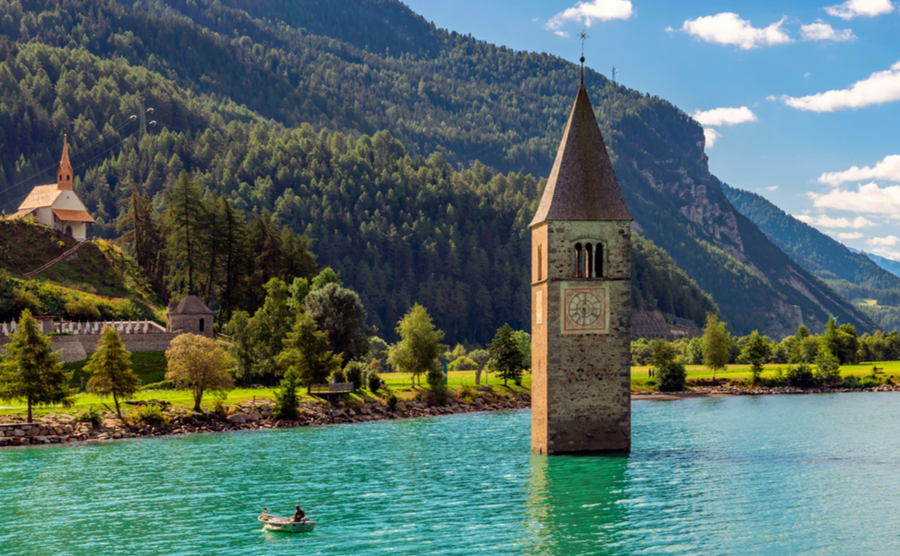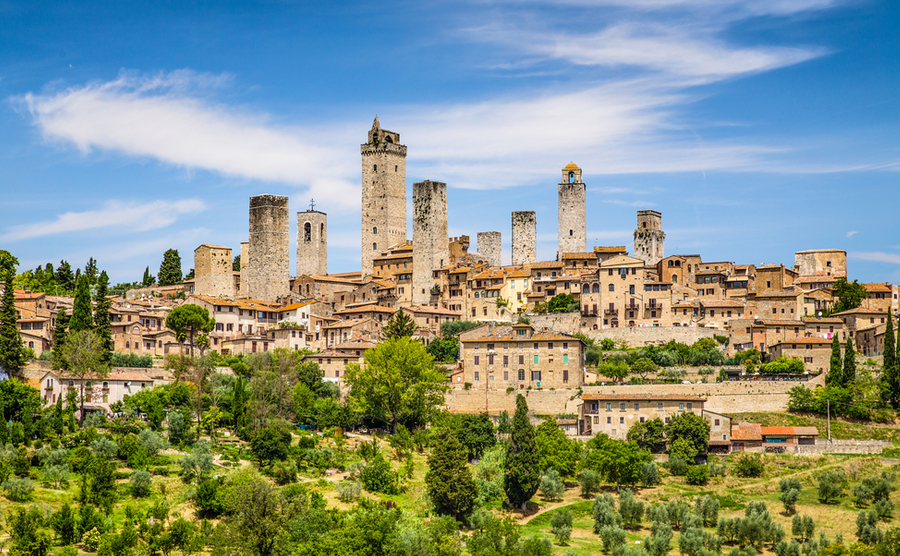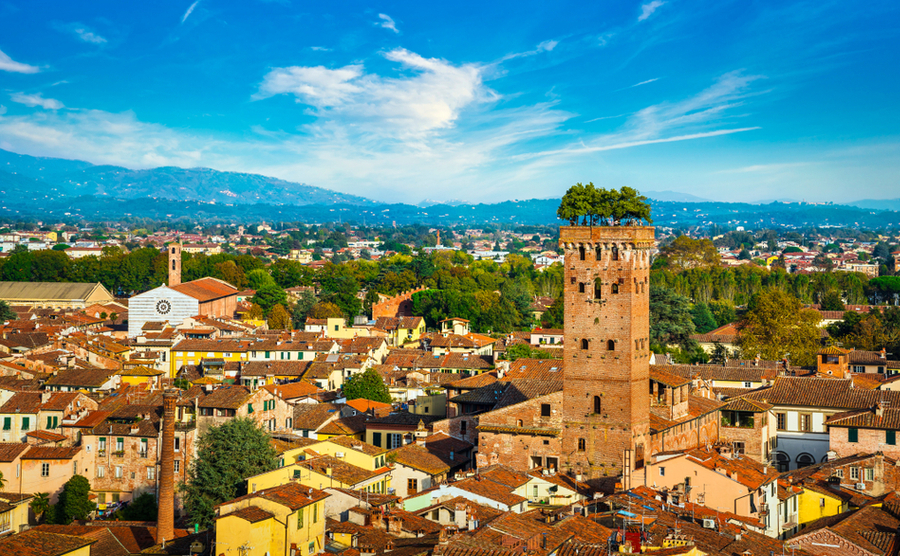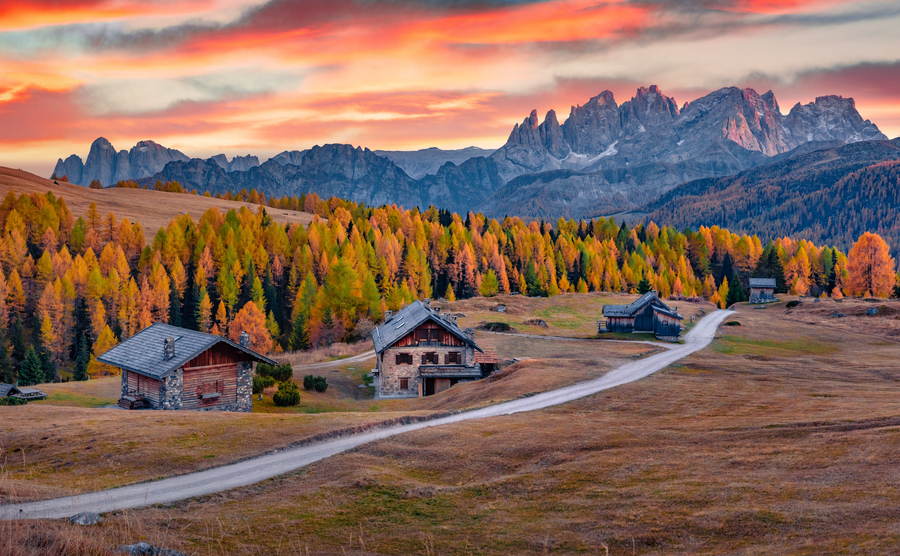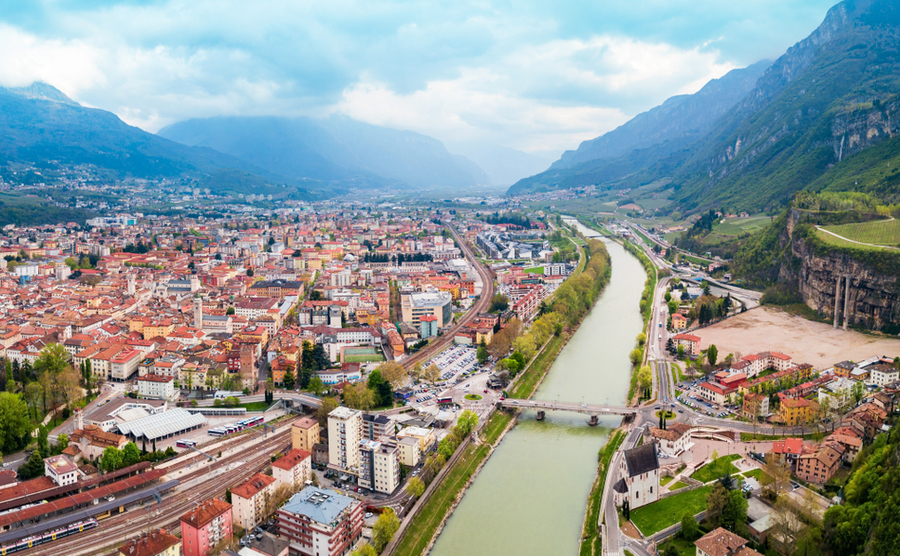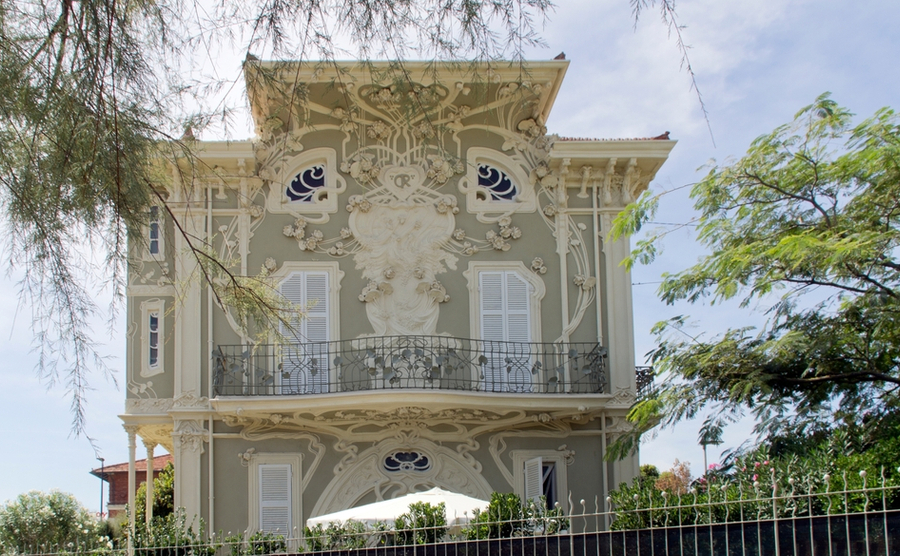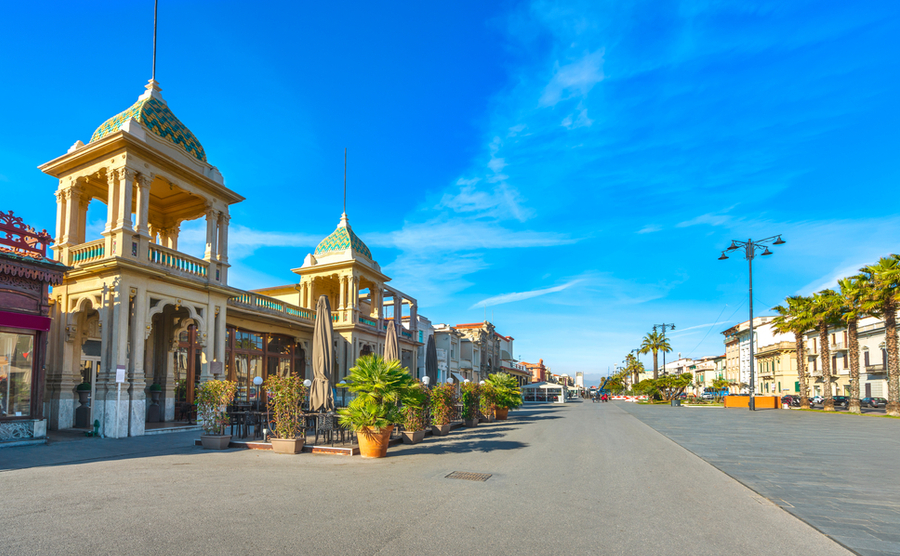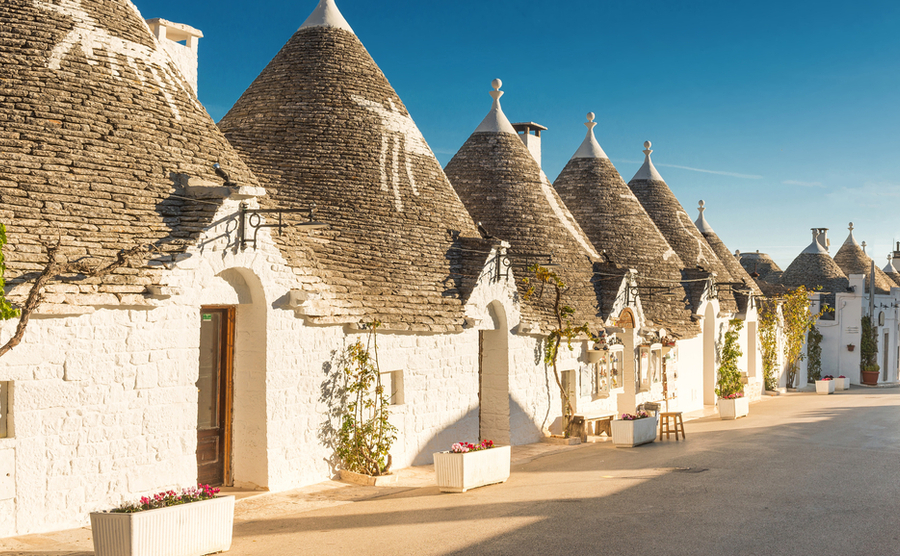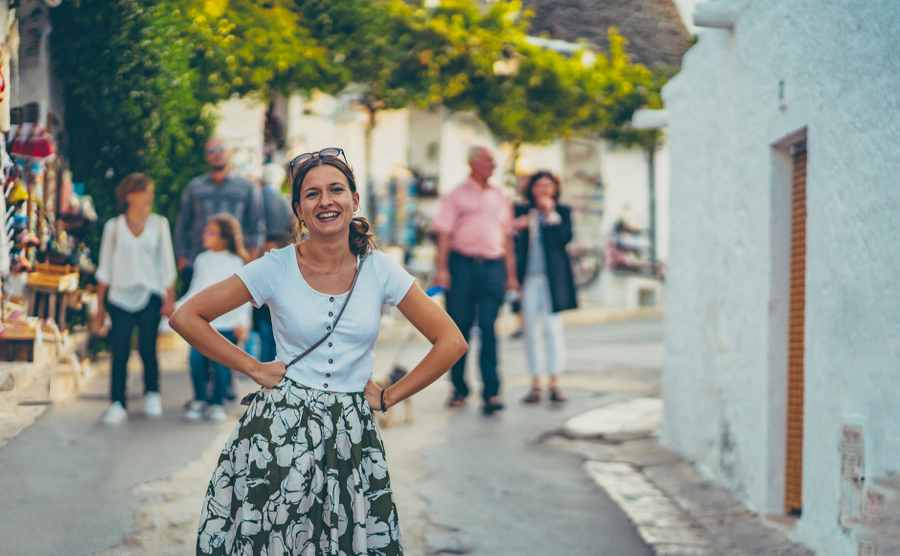Italians are known for style, for imbuing everything with care and beauty. That extends to its homes too, which can translate into some interesting and unusual homes in Italy.
Unusual homes can be prestigious or rustic, but they will always catch the eye. Unique architectural features attract the interest of both house buyers and holiday rental guests. They make you wonder about the amount of effort that went into their construction and the lives of the people who once lived there.
Every house has a story which can be told by the character features left visible, such as fireplaces where meals were prepared, hooks for hanging tomatoes, the manger the horse was fed from and the stone floor where they threshed the grain.
Sometimes you will find a real gem of a property that has a very distinct architectural style. These unusual homes can really spark the imagination and an interest in how it was built and the history of the area. Here are four unusual home styles in Italy that excite house buyers.
Find homes in Italy via our property portal.
Tower Houses
Italians love a tower, not least for defence in less peaceful times. Famous Italian towers include The Leaning Tower of Pisa, Giotto’s Bell Tower in Florence, the defensive towers of Monteriggioni, Saint Mark’s belltower in Venice and the Guinigi Tower in Lucca (The one with the trees on the top, see picture below).
You can see various types of towers around Italy, from bell towers in towns and villages, to defensive look out towers around the coast. Even if they aren’t all able to be used as a home, it’s lovely to have a view of one. Mind you, if your property is very close to a bell tower, it can take a few weeks to get used to the regular ringing of the bells.
The Tower in the Lake
One tower you won’t be able to live near is The Curon Bell Tower, yet it is fascinating to visit as the top section protrudes out of Lake Resia in South Tyrol. In fact, the tower is the only part of Curon village still visible, after the village was demolished and submerged 22 metres under water to allow for a hydroelectric plant in 1950.
Prestigious Tower Houses
Many towers seen in towns were built as houses for wealthy families. It was thought that the higher the tower the more influential the family. As well as a status symbol they also served as a lookout post and safe haven for the family. Between the 12th and the 13th century, Bologna was a city full of towers. Although, today less than twenty still survive.
How was a Tower House built?
To build a 60 metre tower would take three to ten years. These towers were square at the base with a 5-10 metre deep foundation. The tower’s base was made of big blocks of selenite stone. However, the walls became thinner and lighter the higher they went up. They had a thick inner wall but a thinner outer wall, with the gap being filled with stones and mortar.
Towers of San Gimignano in Tuscany
As mentioned, the building of towers and castles in Italy were often a symbol of a person’s power and wealth. A perfect example of tower building gone to extreme is in the village of San Gimignano in Tuscany. Due to rivalries between powerful families, by the end of the 14th century there were 72 towers in San Gimignano. Which is a lot for such a small hill top town.
Due to rivalries between powerful families, by the end of the 14th century there were 72 towers in San Gimignano.
There are now only 14 medieval towers remaining in San Gimignano, which will be protected as the whole historic centre is now proclaimed a UNESCO World Heritage Site. These towers were built as houses, but due to the small size of the rooms they began joining them to neighbouring buildings to create impressive town palaces (Palazzo).
Towers for house buyers
Occasionally, you can find houses with a tower for sale in the countryside or in hilltop towns. You can buy small apartments in San Gimignano from €150,000, and sometimes an apartment will have a room of a tower incorporated in it. However, for the best views of this beautiful hilltop town and its towers, you should experience the stunning panoramas from one of the stone houses for sale in the surrounding countryside. In Tuscany, if you want a close up view of Guinigi Tower, take a look at this three-bedroom apartment in Lucca.
Renting your tower to tourists
A tower is such an unusual home, there are very few in Italy that are available for holiday rental on the Airbnb website. However, towers have their own section on the site, with rental prices varying greatly. They will certainly catch the eye of tourists wanting to stay somewhere unusual.
Chalet homes
Wintertime always conjures up pictures of wooden chalets surrounded by snow. These houses are so different from the homes most of us live in, they definitely qualify as unusual homes. Chalets or cabins are typically found in alpine areas including the mountains of Italy.
The main characteristic of these mountain homes is the special cosy atmosphere that is created, especially when there is snow outside and you are sat by a roaring fire with a hot drink. They can look so beautiful with their wooden balconies decorated with pots of red geraniums. Some of the stone ones were used more for storage and a refuge overnight, these are known as “baite” in Italian. You can still find little hamlets of these stone buildings in the mountains, being sold very cheaply.
How are chalets built?
This will depend on what materials were available in the area at the time of construction. Some were built with all stone, including the roof. While the ones typically used for homes are generally a combination of wood and stone. More modern buildings will also incorporate concrete. Chalets are also recognizable by the large over hang of the roof.
Where can I buy a chalet?
Probably the most sort after place to own an Italian chalet is in the area around Trento by the Dolomite mountains. Famous architect Le Corbusier once described the Dolmites as “the most beautiful pieces of architecture in the world”. The rock takes on different tones of colour as the day goes on, until dusk when it takes on a rosy hue.
Dolomites Unesco World Heritage
Since 2009 the Dolomites have been listed by UNESCO as a World Heritage Site. The area is characterised by jagged mountain peaks, famous ski resorts and glacial lakes. There are also some stunning regional and national parks, popular for outdoor pursuits all year round.
Some unusual homes recognised by UNESCO, which can be seen in the area are, “The Prehistoric Pile Dwellings”. The listing relates to 111 sites of stilt houses in the Alpine countries of Switzerland, Germany, Austria, Slovenia, France and 20 sites in northern Italy. One of the best places to get a taste for what life in these unusual homes was like is the Lake Ledro Stilt House Museum in Trentino.
Chalets for house buyers
A mountain chalet is a great base for year-round activities, from skiing to hiking. In the right location you will also have the potential to rent out the property to tourists for much of the year. Many of the larger chalets are divided into apartments, making them much more affordable for those seeking a holiday home.
Trento and Bolzano are a good place to start your search for an unusual chalet home. Two-bedroom properties near a ski slope have asking prices in the region of €220,000 but speak to the estate agent to find out what’s new on the market within your budget. For cheap stone buildings needing renovation try the mountains of the Piemonte region. There are also some beautiful chalets with modern apartments in Valle d’Aosta in the north west. As well as the Alps, the Apennine mountains stretch down the length of Italy, so there are plenty of places to buy a property with a view of the mountains.
Renting out your chalet
Average rental prices on Airbnb are over €200 per night for a 2-bedroom cabin, even more if it’s close to a ski slope. The mountain areas are also very popular for hiking at other times of the year, so the potential rental season can be longer than in a seaside resort.
Liberty style homes
Liberty Style architecture was Italy’s version of the popular Art Nouveau which emerged slightly earlier. This style of architecture can be seen in private houses, shops, hotels and public buildings. Major cities where the Liberty style can be spotted include Milan, Turin and Palermo. Although, where it is most celebrated is in the spa and seaside resorts. The best examples can be seen are in Montecatini Terme, Viareggio and Sanremo.
Origins of the Liberty Style
Liberty Style took its name from the department store in London and can be seen not just in architecture, but in furniture and art. The 1902 Turin Exposition, was one of the key events of the Liberty style movement with artists from across the world displaying their work. Sharing similarities with the Art Nouveau already flourishing in other parts of the world, it was one of the forerunners to the Art Deco style that arrived in the 1920’s.
What is Liberty Style?
Inspired by natural shapes, the Liberty Style is highly decorative with lavish ornamentation, hence also being known in Italy at “Stile Floreale”. It can incorporate stained glass windows, swirly decorative iron work on balconies and stone carved surrounds to windows and doors. It also has a Baroque influence seen in the bright colours and lavish decoration.
Examples of Liberty Style
A beautiful example is Casa Galimberti in Milan, with its decorative tiles showing plants, flowers and people, framing windows and ornate balconies with iron railings. Also, take a look at the ironwork of Casa Ferrario in Milan and the windows of Casa Fenoglio-Lafleur in Turin.
Holiday locations with Liberty Style buildings
International tourism during this era, gave Liberty Style its biggest boost. Famous Italian spa towns such as San Pellegrino Terme, Salsomaggiore Terme and Montecatini Terme still have some amazing examples, as do the seaside resorts of Viareggio in Tuscany and Sanremo in Liguria. The coastal area in Northwest Tuscany, called Versilia, has been a favourite holiday destination of Aristocracy since the 1900’s, who built liberty villas all along the coast.
In Florence and Lucca, this style can be mostly found in private homes, sometimes in residential areas just outside the city walls. On Viale Giusti in Lucca there are four liberty villas.
Liberty style for house buyers
While Liberty Style Villas cost much more than most house buyers can afford, you can find apartments within Liberty Style buildings. The Liberty style can be found among properties for sale in Florence, Lucca, Montecatini Terme, and Viareggio. Apartment prices within a Liberty Style building in a seaside town can cost as little as €150,000. They are not always easy to find online, as Liberty isn’t always mentioned in the title, but you can ask a good estate agent to look out for one for you.
Trulli Unusual Homes
Trulli (singular Trullo), are structures built with limestone in southern Puglia, with a cone shaped stone roof. They used to be used as temporary shelters or as permanent homes for shepherds and farmers. Their quirky style has grabbed the imagine of many house buyers, who have begun renovating them into charming holiday homes. The ones with many cones can even be converted into a family home or B&B.
Where can you see Trulli?
Although rural trulli are widespread throughout the Valle d’Itria and dotted around the Puglian countryside, the highest concentration can be found in the town of Alberobello. This small town has more than 1500 Trulli.
How is a Trullo is built?
These unusual homes are an extraordinary example of dry stone construction, a technique dating back to prehistoric times and still used in Puglia today. The Trulli were built with blocks of limestone chipped to fit snuggly together to form the walls and roof. This stone was cut from the ground onsite during excavations for the construction of underground cisterns that collected water from the roof. Stone was also retrieved from nearby rocky outcrops and stones found in the fields. The walls were built directly on the limestone bedrock.
Trulli were built with a small door and small windows for security and to keep out the heat. An internal hearth and alcoves are embedded in the thick walls. The walls and roof are double-layered with a core of smaller stones.
Trulli for house buyers
You can find Trulli for sale, starting at €50,000, but they are likely to need the roof rebuilt, which involves employing a local artisan builder. This can cost from about €12,000 if it is just the outer stone of one cone that needs relaying. But the price will vary greatly depending on the amount of work involved, so always get a quote before putting in an offer on a Trulli.
You will probably also need to budget for plumbing, electrics, a water supply, septic tank, kitchen and bathroom. Some Trulli have a building next to them, called a Lamia, this is more rectangular in shape and may have a barrel ceiling. These are easier to work on yourself. As well as the condition of the property the location will play a big part in the pricing, so look all around the area. The asking price of a renovated Trulli can be upwards of €300,000, because they are offering an unusual home that has been built by highly skilled artisans unique to the Puglia region.
Renting your Trulli to tourists
Airbnb actually has a section button just for Trulli. According to their website, the average daily rental price for a two-bedroom Trulli is €266. For a two-bedroom trulli with pool in August you could ask over €2,000 for a week. When you are competing for tourist bookings an unusual home is going to stand out from the crowd.


 Property Guides
Property Guides France
France Portugal
Portugal Spain
Spain Italy
Italy USA
USA Ireland
Ireland Greece
Greece Cyprus
Cyprus Australia
Australia New Zealand
New Zealand Canada
Canada Turkey
Turkey UK
UK